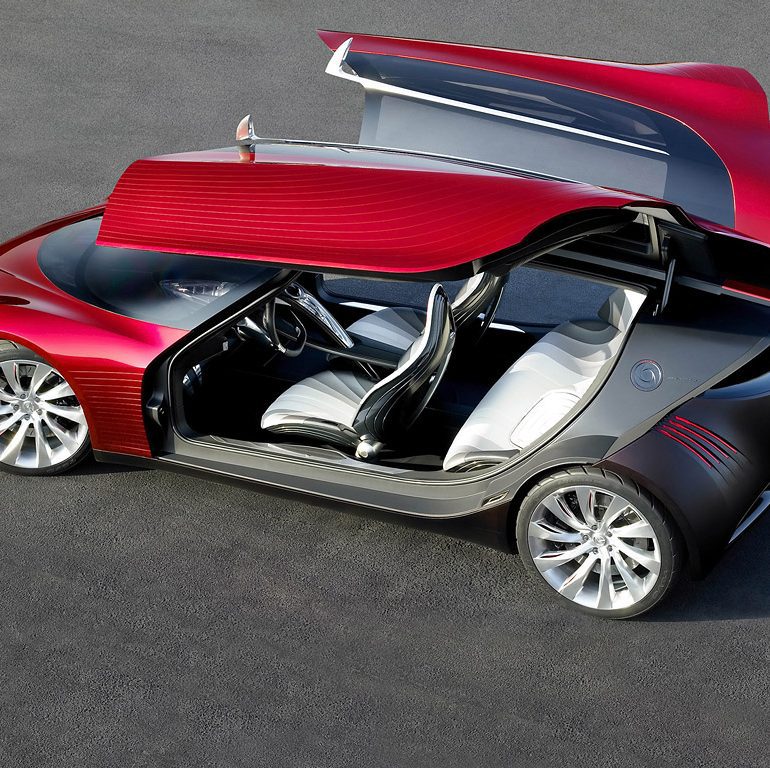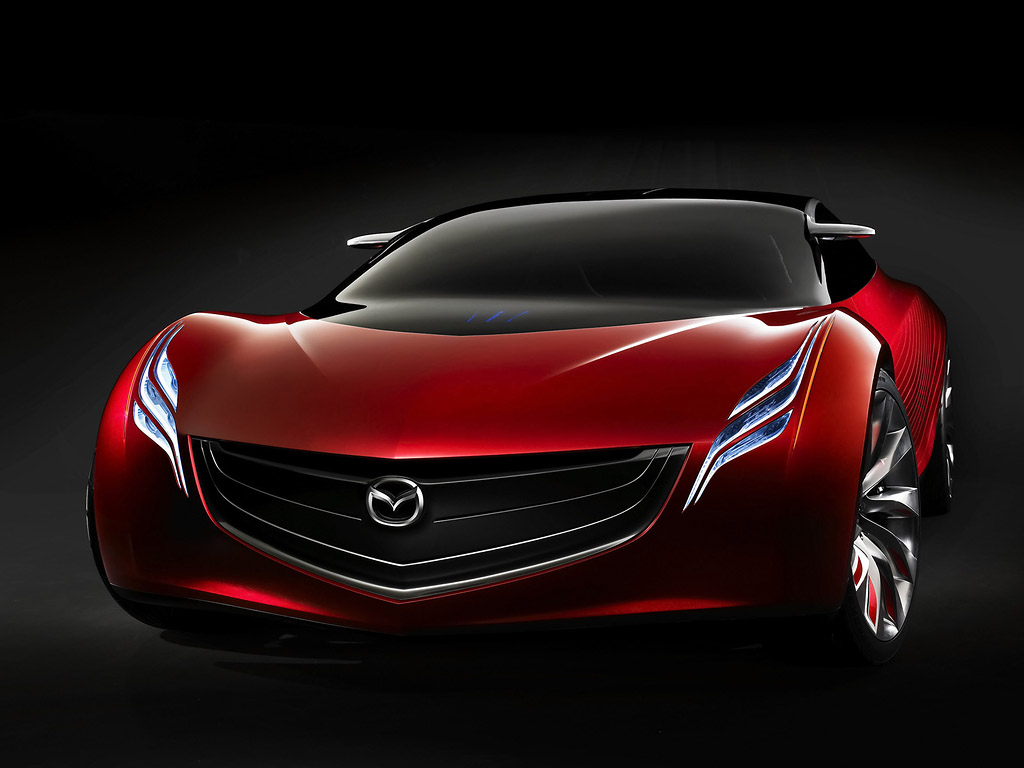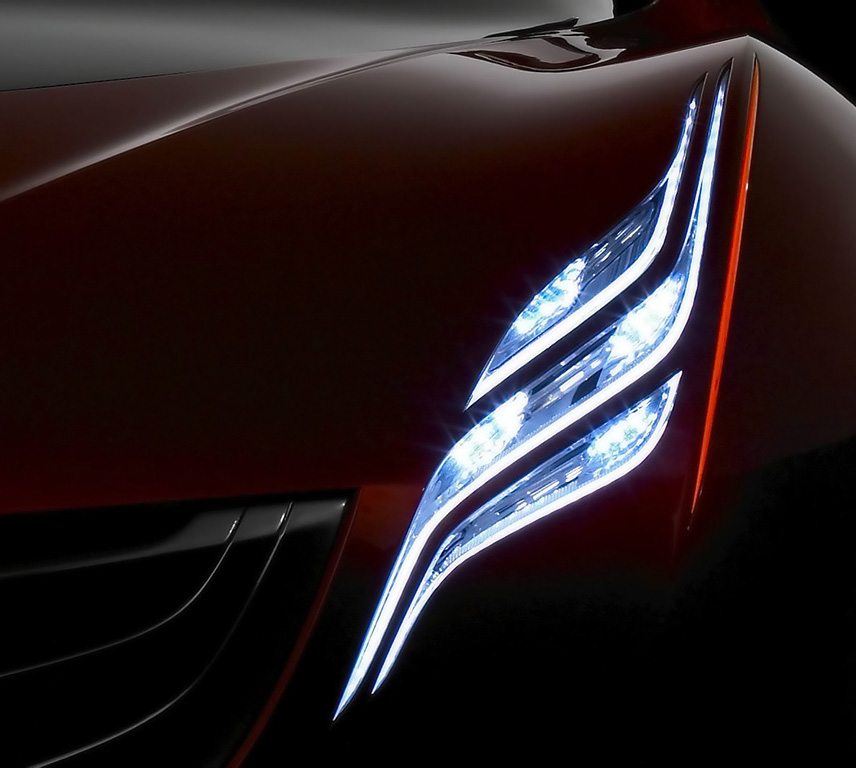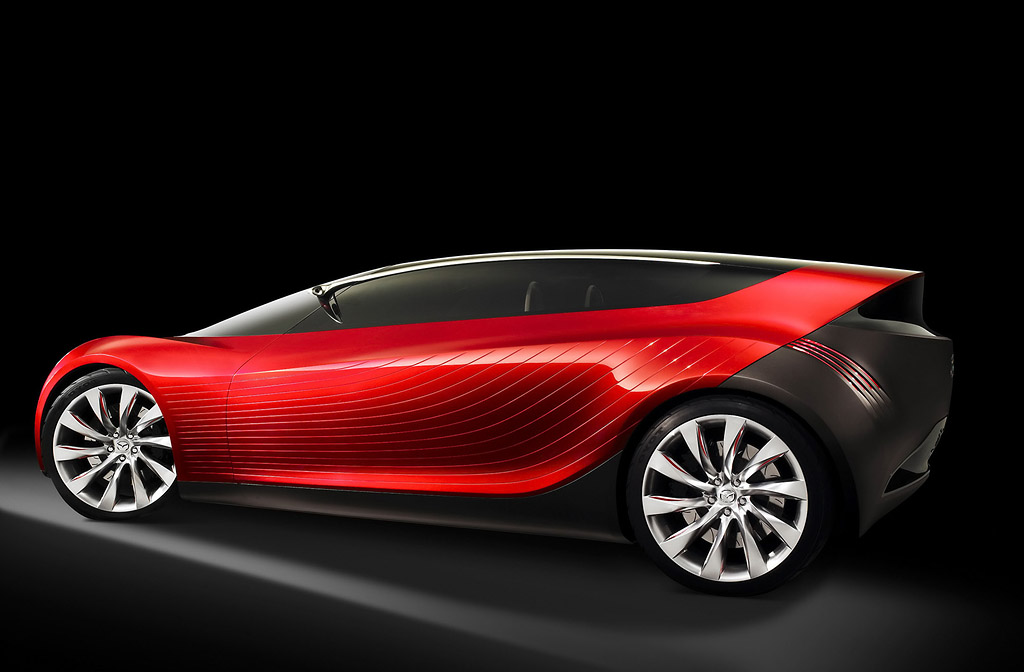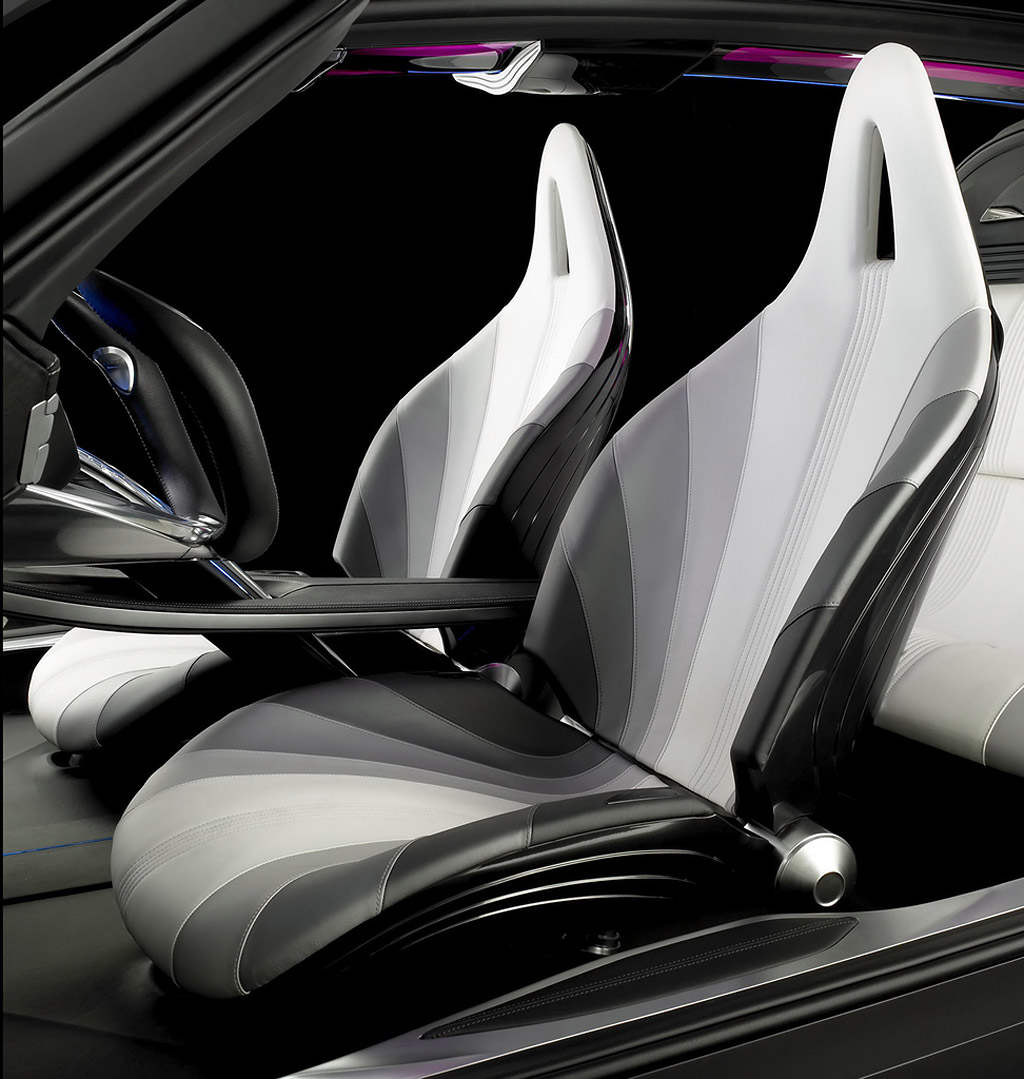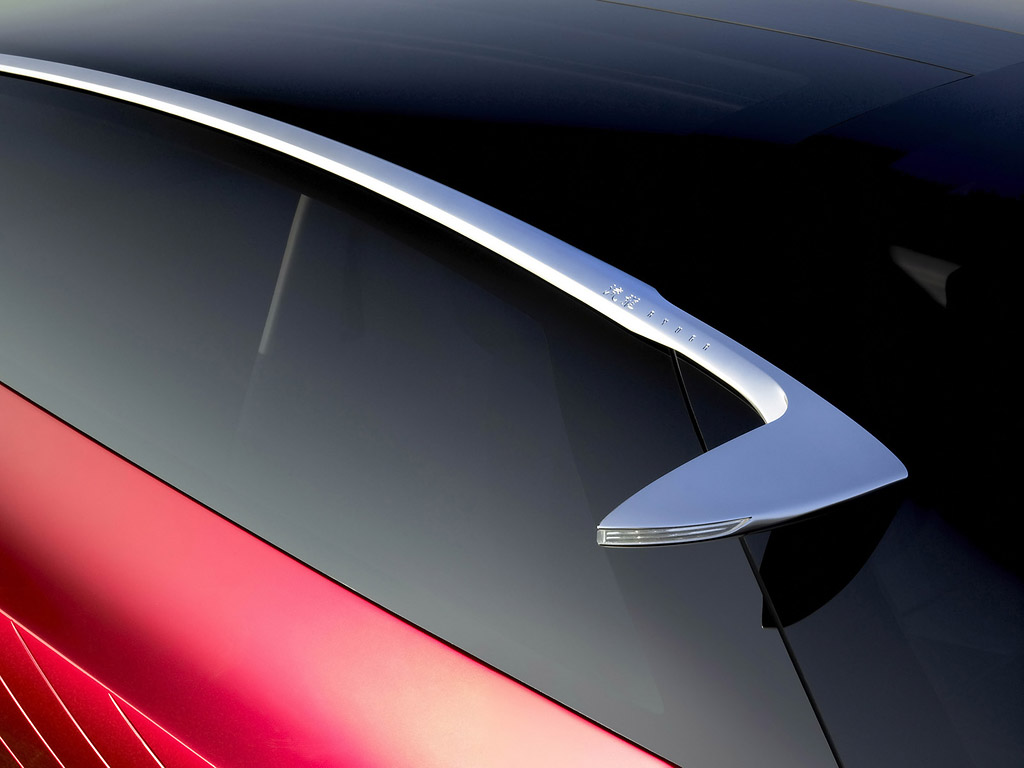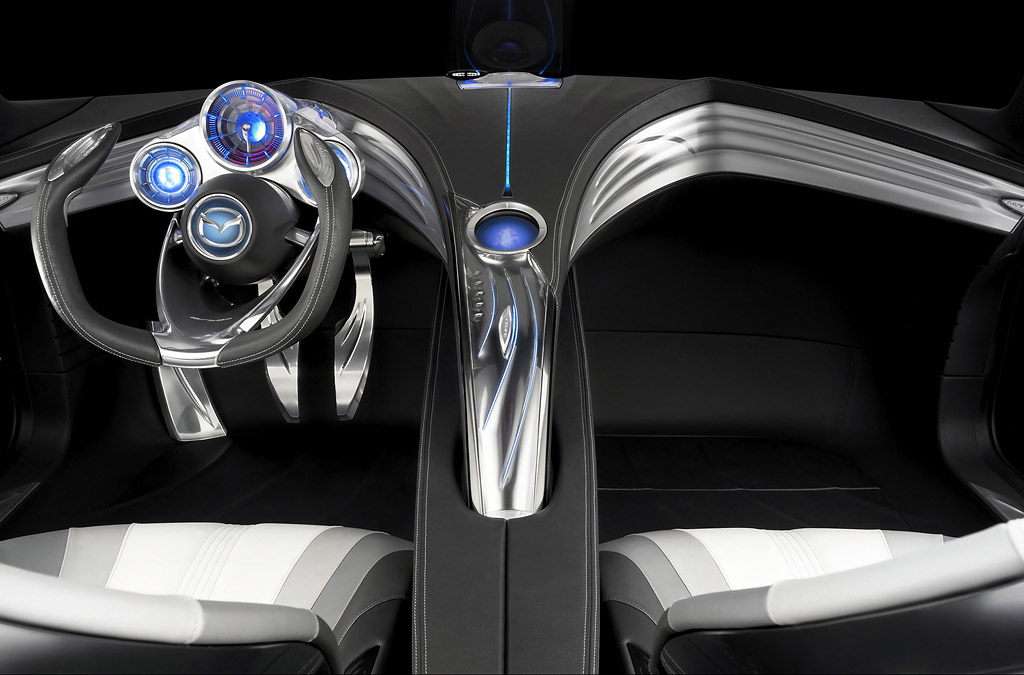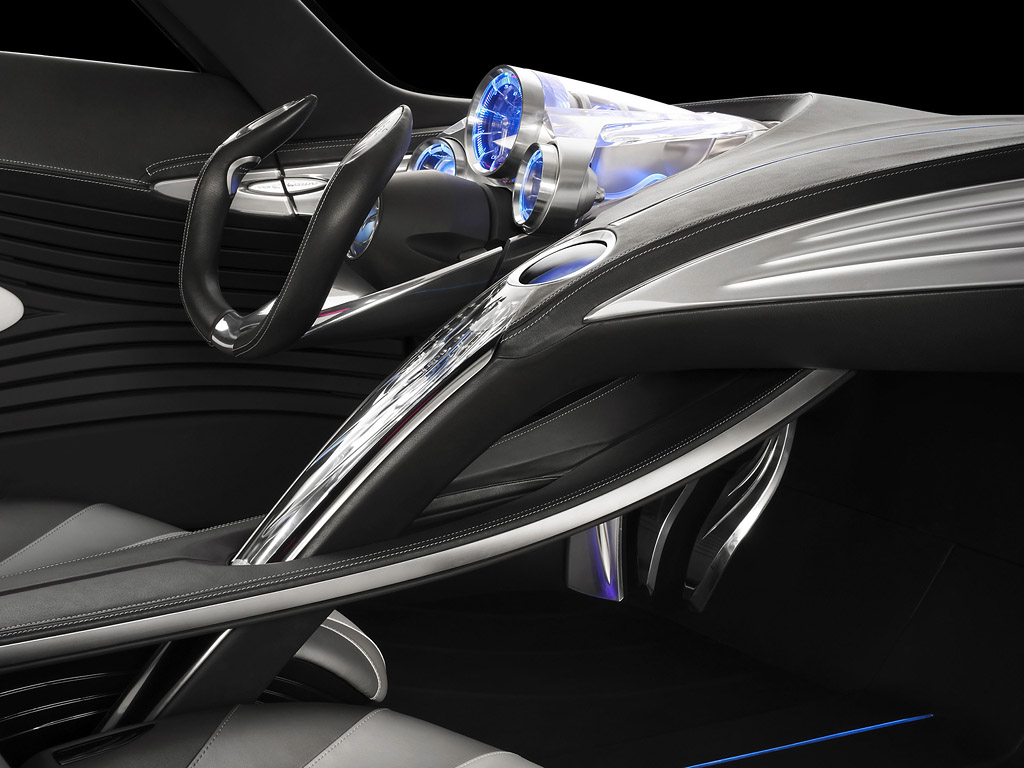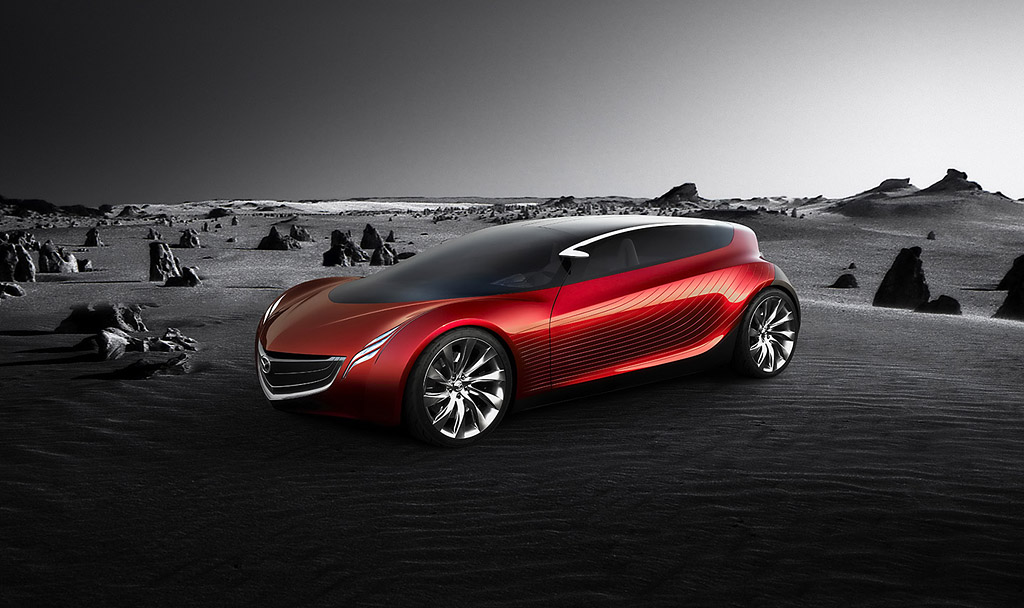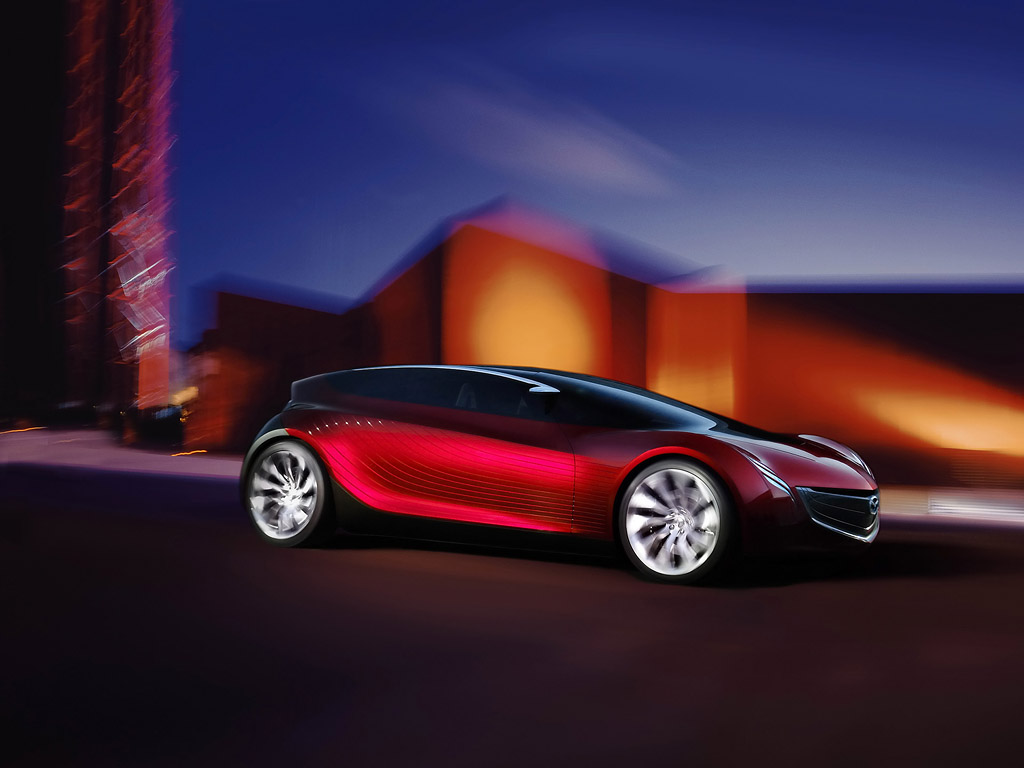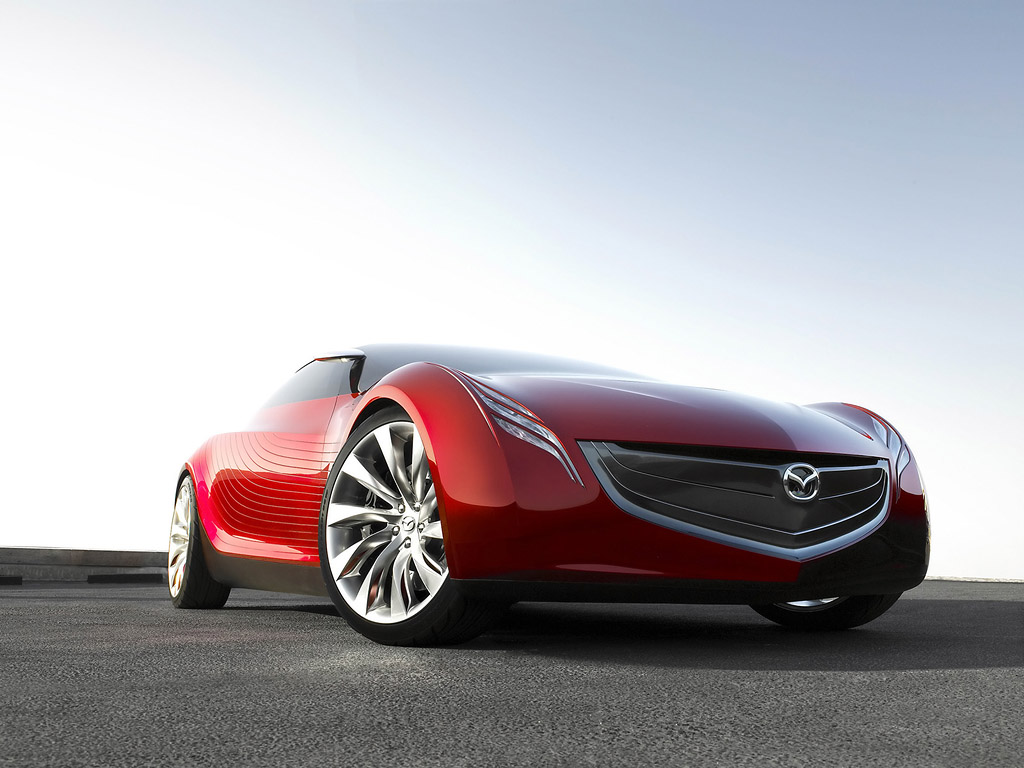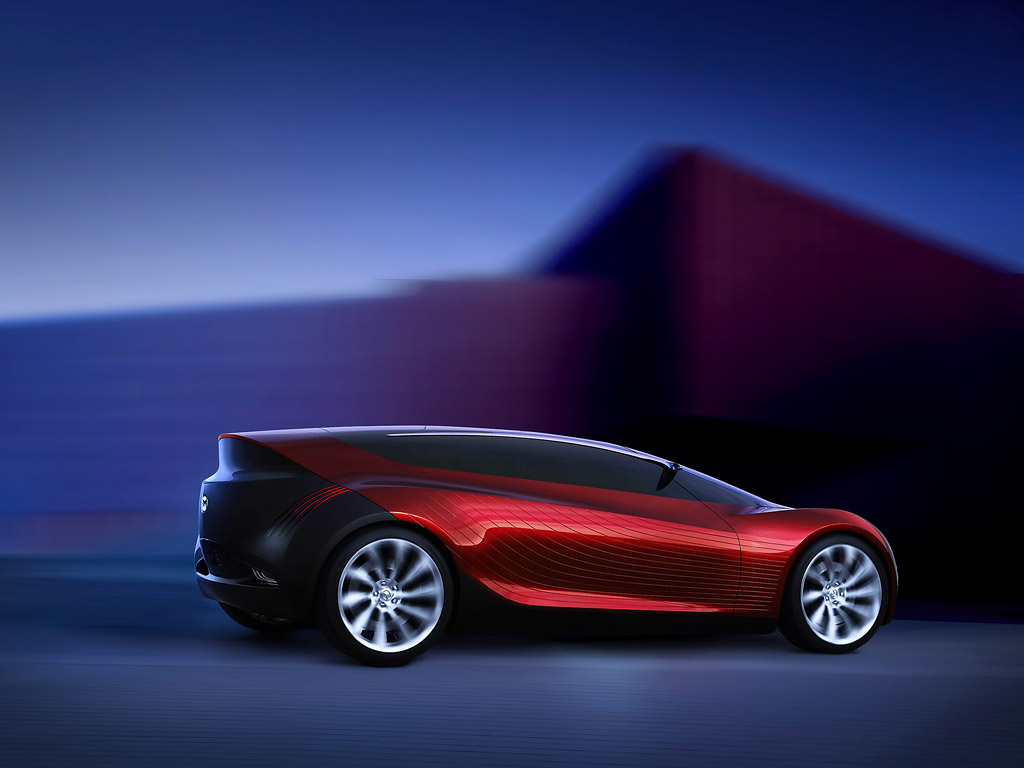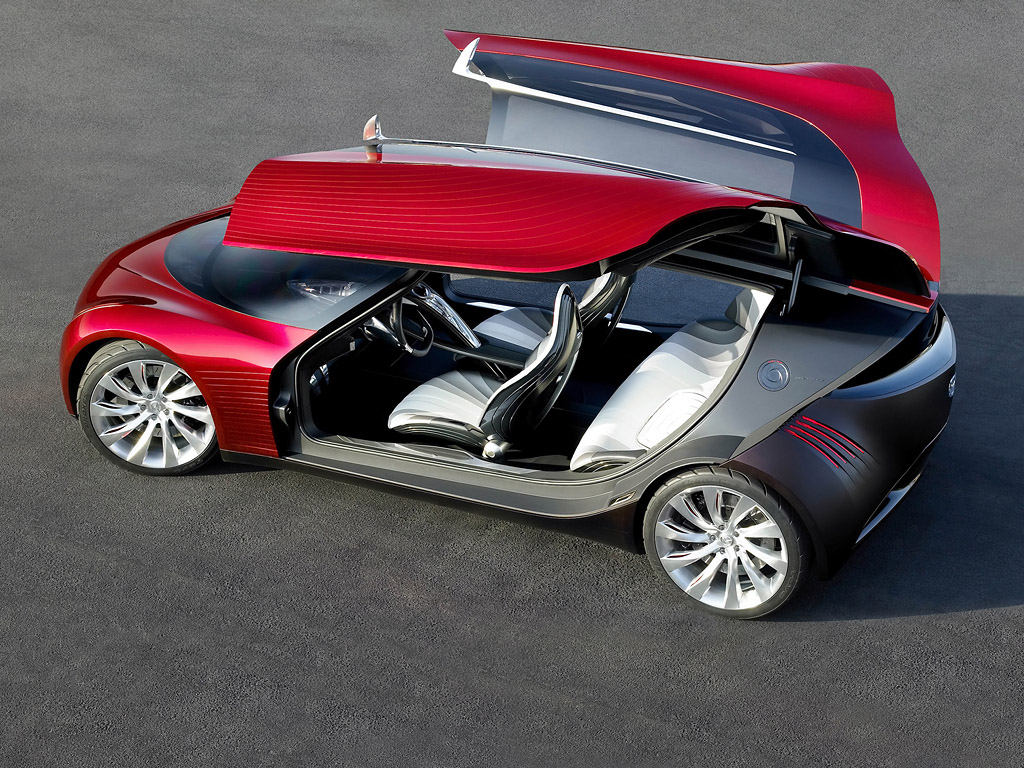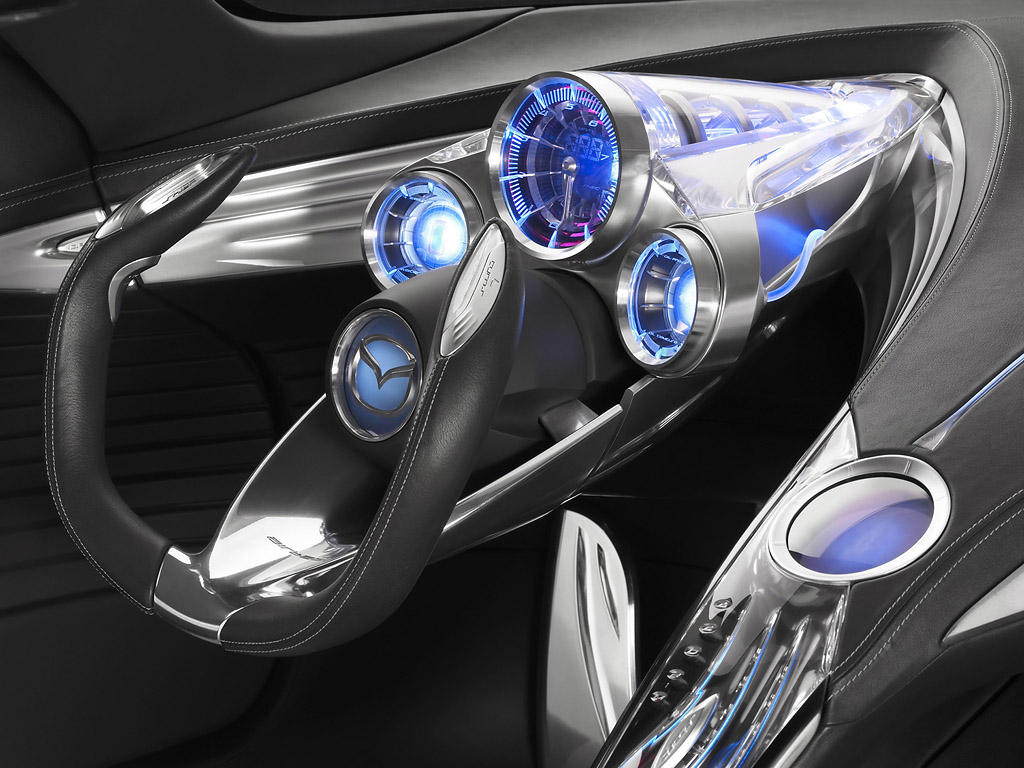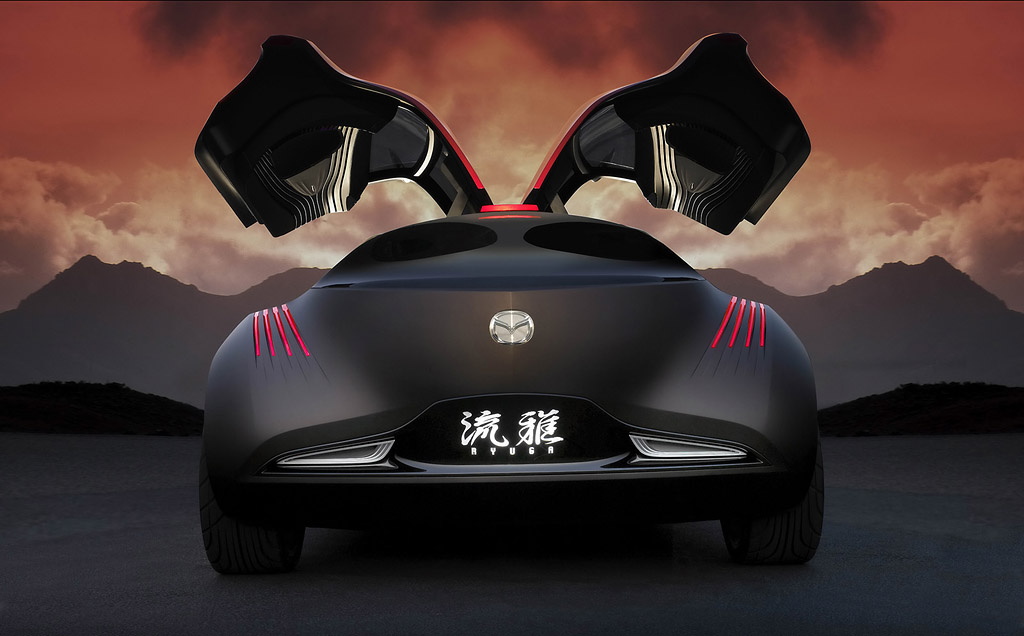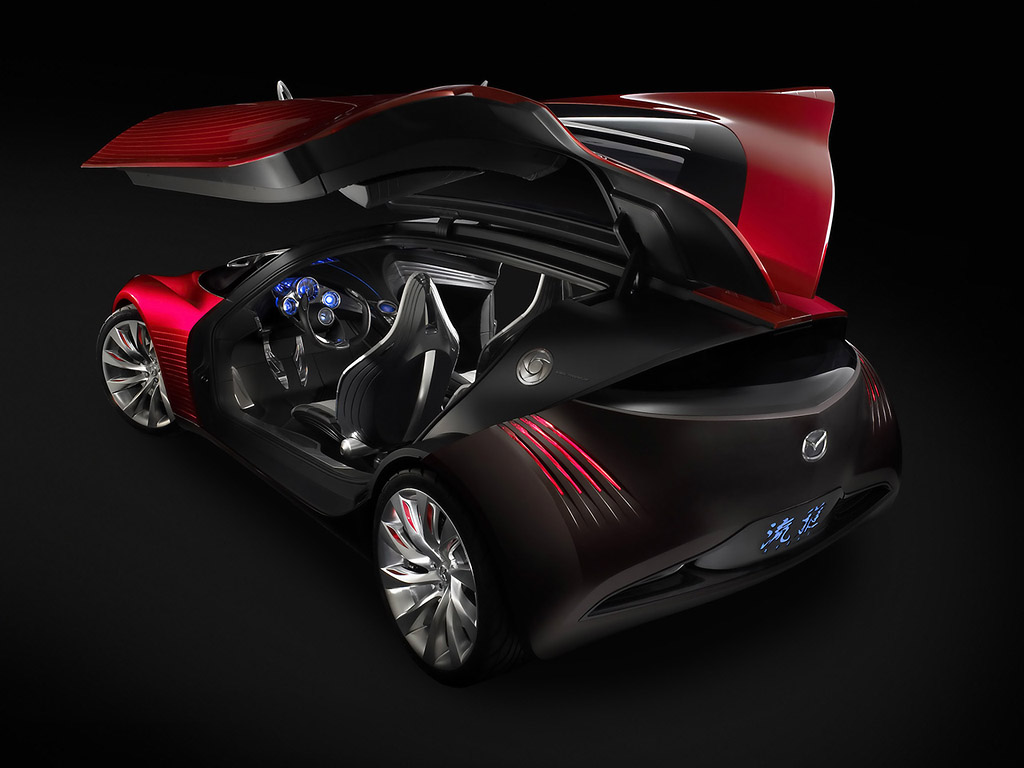2007 Mazda Ryuga Concept
DETROIT-Laurens van den Acker, Design Division General Manager for Hiroshima, Japan’s Mazda Motor Corporation , disturbed the status-quo and challenged every designer in his three global studios with that very question upon his arrival at Mazda early last year. After months of soul searching, hundreds of sketches and thousands of discussions, meetings, arguments and revisions, the first part of the answer was unveiled at the recent Los Angeles Auto Show. Mazda’s provocative Nagare concept (Japanese for flow) introduced a new surface language that evokes the emotion of motion in a stationary automobile.
”But we wanted to take the idea further,” van den Acker continued. ”The Ryuga concept we’re presenting in Detroit is our next step in the evolution of Nagare. It’s an exploratory design study that’s more realistic than Nagare and therefore more useful in gauging reactions from those who see it. To draw this new surface language closer in time to a car Mazda will produce for sale, we’ve added interior and powertrain details that were purposely absent from Nagare.”
Yasushi Nakamuta, chief designer for this project, previously headed the design of Mazda’s immediately successful third-generation 2006 MX-5 Miata. Nakamuta says, ”Ryuga incorporates elegant and refined design treatments which express Japanese concepts of mysterious beauty and intelligence, based on the new design theme that began with the Nagare concept car unveiled at the LA Auto Show.”
Reflecting its Japanese origin, Ryuga is both simple and complex. While the dominant flow theme is simple, the details – such as the side surfaces and the wheels – are intricate. Solidity and fluidity live here together, in harmony. Conducting a guided tour of the exterior, Nakamuta points out several key features:
* Ryuga’s side surfaces were inspired by karesansui (Japanese dry gardens). The carefully raked pebbles in these garden s represent peaceful ripples caused by a breeze over a pool of water. The karesansui’s man-made image of natural flow is represented in the Ryuga’s surface texture to express simplicity and refinement.
* The headlamp shape resembles the flow of morning dew dropping from bamboo leaves. Advanced LED and fluorescent tube technology will enable such a striking design to be used on a production vehicle in the foreseeable future.
* To impart motion, the 21-inch wheel spokes – different on the left and right sides – are slightly twisted as if they’re delivering torque. To convey the feeling of gas turbine blades, the trailing edges of the wheel spokes are accented with a tinge of body color.
* Flowing lava inspired both Ryuga’s exterior hue and the tail lamp design. Depending on the incident light, Ryuga’s surface appears to be shades of yellow, red, and blue, exactly like molten, flowing lava.
* The roof molding tightens up the flowing cabin and gives an accent to the body styling as well. Cameras located at the forward end of each molding convey rear views to a center cockpit display screen. Turn signals are also integrated into these protruding accents.
Large wheels placed at the far corners of Ryuga’s exterior lend a highly stable, balanced stance. The aggressive wedge shape imparts motion even when this sports coupe is parked. Volumes that are small in front, larger at the rear, wrap around and over the wheels to give the exterior tension and direction. While this initiative began with textures inspired by nature, it goes much deeper than that.
Thanks to Mazda’s innovative packaging expertise, Ryuga is significantly shorter and lower than today’s four-passenger RX-8 sports car, yet it too accommodates four passengers in roomy comfort. A relatively long (110.2-inch) wheelbase and two large gull-wing doors provide a wide-open invitation to the interior.
As the doors rise to expose the interior of Ryuga and allow easy slide-in access, the passengers are presented with the fusion of a cockpit – designed to maximize the emotional connection between the car and driver – with the social atmosphere of the rear passenger space, where lounge-like comfort is ensured through expansive space and Nagare-inspired design.
The front bucket seats provide ample lateral support for energetic driving with the shape of the seats creating an impression of movement which is further emphasized by the patterns in the material.
The experimental floating center cluster allows a high level of interface between the driver and the multi-function touch panel without having to take one’s eyes off the road ahead. Information necessary for safe and dynamic driving is available to the driver with RPM and speed (which is shown in both analog and digital format s ) being displayed on the same axis.
Flowing upwards, the center cluster dynamically penetrates the front information panel which reflects Zoom-Zoom futuristic and sporty design craftsmanship, as well as an integrated interface between man and machine. Elongated pods give the cockpit depth while bringing information closer to the driver’s eyes. An open-top steering wheel provides enhanced sight lines to the instruments and the road ahead .
Flow textures are emphasized in the door trim with lines that begin at the center of Ryuga’s Mazda-trademark five-pointed grille and sweep rearward through interior surfaces. The artistic combination of leather, polished aluminum and translucent plastic give the interior a warm glow.
As part of Mazda’s environmental initiatives, an E85/Gasoline Flex Fuel engine which runs on sustainable bio fuel could be used in Ryuga. This engine delivers torque and power, balancing driving and environmental performance. Other important features that will support safe driving are the Charge-Coupled Device (CCD) cameras installed for the rear monitoring system and the blind-spot monitoring system. These help ensure safe driving while changing lanes and allow easy identification of potential obstacles.
In order to ensure a driving experience an open top steering wheel is employed with highly sensitive settings to respond to the driver’s smallest input. The car also features steer-by-wire technology and gauges that deliver superbly clear information to the driver. The dramatic wheels with TOYO PROXES 245/35R-21 tires complete the driving experience, and the sophisticated original tread pattern perfectly suits the Ryuga’s design concept.
”The real significance of both Nagare and Ryuga,” notes van den Acker, ”is that it’s the first time Mazda has ventured forth in search of a design motif that is undeniably new. Both concepts are exploratory studies and neither is planned for production. While Mazdas of the past and present have embraced flow in various ways, it’s our intention to greatly intensify that character in the future.”
Story by Mazda, edited by Supercars.net


